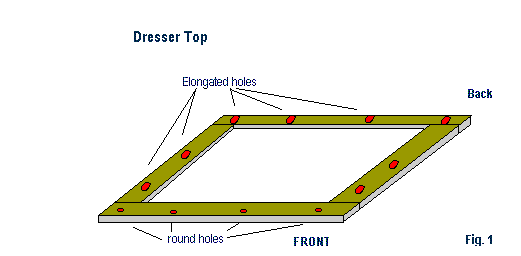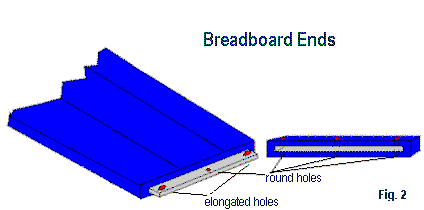
|
 |
| Articles |
 |
Wood Movement
|
 |
|
Wood, being a material that was once very much alive, and quite full of water, never loses it ability to absorb moisture from its surroundings. When it does absorb water, it expands and when it dries again, it shrinks. If you do not plan for this movement, your projects can be weakened, disfigured or even ruined.
I learned the hard way. (Do we always have to learn that way?) One of the first projects I made, was a chest of drawers. I was making it with the remains of one I found at the dump. The wood was maple and looked beautiful, but I had a lot to learn. The crack that eventually formed goes right up the middle of one side, right across the top, and down the other side. The whole thing literally split in two. The good news for me is, I learned right away, on that first project, and the wood was free.
|
Advertisement
Contact me to place your ad here
|
Without going into the details of why wood moves in the directions it does, I'd like to just present the facts and some methods to account for wood movement in various projects. This of course will not be a complete list, and if you would like to send me your ideas, I can add them to this article and let it grow. I am still learning.
- Wood expands and contracts across the grain significantly more than lengthwise with the grain.
- When joining boards with the grain running at 90° angles to each other, never glue rigidly all the way across the grain. As the wood expands or contracts it will weaken or break the bond or if the glue holds, it could split the wood. Wood of the same species can always be rigidly joined when their grain runs in the same direction.
- When joining wood across the grain, affix the wood rigidly in one spot (either end or in the middle) and allow the rest of the board to move. To attach the two together, use a mechanical fastener, such as a screw, with an elongated hole, which will allow the wood underneath to move. (See fig. 1 )

- For a dresser or desktop, you would rigidly affix at the front to maintain the front of the piece's dimensions allowing the wood to grow toward the back, where the growth or shrink will not be seen. In the example above, the boards would run left to right across the top.
- Breadboard ends use a similar method to attach a finish piece of wood covering the end grain of the breadboard. In this case you attach the end board rigidly in the center, since both sides are seen and the movement is cut in half. The two edges are affixed with wooden pegs, with elongated holes in the edge of the breadboard. (See fig. 2 ). Note the tenon should not be as wide as the mortise to all for it to grow a little.

|
|
|



